Do you have a question about the Tosot WAT Series and is the answer not in the manual?
| Cooling Capacity | Varies by model (e.g., 9000 BTU, 12000 BTU, 18000 BTU, 24000 BTU) |
|---|---|
| Refrigerant | R410A |
| Indoor Unit Dimensions (WxHxD) | Varies by model |
| Outdoor Unit Dimensions (WxHxD) | Varies by model |
| Indoor Unit Weight | Varies by model |
| Outdoor Unit Weight | Varies by model |
| Noise Level (Outdoor) | 50 - 60 dB |
Explains the meaning of various symbols used in the manual for warnings and instructions.
Provides general warnings, indicating what actions should never or always be performed.
Indicates a hazardous situation that, if not avoided, will result in death or serious injury.
Indicates a hazardous situation that, if not avoided, could result in death or serious injury.
Indicates a hazardous situation that, if not avoided, may result in minor or moderate injury.
Indicates important but not hazard-related information, used to indicate risk of property damage.
Lists critical safety precautions related to the refrigerant and its handling.
Outlines the necessary certification for personnel working with refrigeration systems.
Provides key reminders for installing the air conditioner safely.
Details the steps for welding refrigerant system pipes, requiring a qualified technician.
Details the procedure for filling refrigerant, requiring a qualified technician.
Lists essential safety precautions to prevent injury and property damage during operation.
Essential safety advice, including avoiding flammable vapors and extension cords.
Details electrical requirements and grounding to prevent hazards.
Explains how to test the air conditioner's power supply cord with a built-in device.
Specifies the recommended indoor and outdoor operating temperature ranges for the unit.
Lists crucial safety measures for electrical wiring during installation.
Provides specific guidelines and requirements for electric wiring connections.
Identifies and labels the main parts of the window air conditioner unit.
Lists the necessary tools required for the installation process.
Shows the various components that are included with the air conditioner unit.
Provides guidance on choosing an appropriate location for unit installation.
Outlines essential criteria for choosing a suitable installation location.
Details the process of installing the side filler panels onto the air conditioner unit.
Describes how to prepare the window frame, potentially adding a wooden strap for proper tilting.
Explains how to cut and apply the sealing strip to the lower part of the window frame.
Guides on positioning the unit in the window and ensuring correct tilt for drainage.
Details how to extend and fix the side panels to the windowsill using screws.
Describes how to secure the lower sash of the window using a sash lock or the window itself.
Explains how to apply a sealing strip between window panes to prevent entry of rain and insects.
Provides step-by-step instructions for safely removing the unit from the window.
Highlights crucial operational tips, like waiting before restarting and temperature limits.
Introduces the remote control and its general purpose.
Details the functions of the POWER, MODE, (-) BUTTON, (+) BUTTON, and FAN buttons on the remote.
Explains the 'I FEEL' function for automatic temperature adjustment based on room conditions.
Describes how to activate and cancel the 'SLEEP' mode for temperature control.
Explains how to set automatic ON/OFF timers and lock/unlock controls.
Guides on how to replace the batteries in the remote control.
Explains how to turn the unit on/off and its backup mode after power failure.
Details the different operating modes (Auto, Cool, Energy Saver, Fan Only, Dry).
Describes how to adjust the fan speed settings (AUTO, Low, Med, High).
Explains how to set the timer for auto ON or auto OFF operations.
Informs about the filter check indicator and how to reset it after cleaning.
Explains temperature adjustment buttons and what is displayed on the unit.
Guides on how to adjust the fan direction using the auger type rod.
Describes common sounds the air conditioner might make during operation.
Provides warnings and steps for cleaning the air conditioner.
Details the procedure for cleaning the air filter to maintain performance.
Instructions for cleaning the exterior cabinet and controls of the unit.
Advice on checking and repairing paint damage on the unit.
Recommends scheduling annual professional maintenance for optimal performance.
Guidance on how to store the air conditioner during the winter season.
Specifies the required qualifications for personnel performing maintenance and repair.
Safety precautions and conditions for storing the air conditioner unit.
Details the safe disposal and recycling procedures for the unit, requiring qualified personnel.
Safety checks required before working on systems containing flammable refrigerants.
Guidelines for ensuring a safe work area when handling refrigerants.
Procedures for checking refrigerant presence and using appropriate detectors.
Requirement for having appropriate fire extinguishing equipment available.
Strict rules about keeping ignition sources away from the work area.
Ensures the work area is adequately ventilated to disperse refrigerants.
Checks for electrical components and adherence to manufacturer guidelines.
Initial safety checks for electrical components, including capacitor discharge.
Procedures for working on sealed components, including disconnecting electrical supplies.
Guidelines for working on intrinsically safe components in flammable atmospheres.
Checks for wear, corrosion, and other environmental effects on cabling.
Prohibits the use of open flames for detecting refrigerant leaks.
Lists acceptable methods for detecting refrigerant leaks, with precautions.
Details the process of removing and evacuating refrigerant from the system.
Requirements for charging refrigerant, including contamination prevention and cylinder handling.
Procedures for safely decommissioning the unit and recovering refrigerants.
Specifies requirements for labelling decommissioned equipment containing flammable refrigerants.
Detailed steps for safely recovering refrigerants into appropriate cylinders.
Identifies causes and solutions for the unit failing to operate.
Addresses issues related to fuses blowing or circuit breakers tripping.
Explains why the power supply cord's reset button might pop out and how to fix it.
Covers reasons why the temperature setting might not be adjustable.
Provides solutions for unusual odors emanating from the unit or room.
Discusses reasons for the unit running excessively, including comparisons to older models.
Explains causes and solutions for water leakage from the unit into the house.
Troubleshoots issues with the remote control's signal reception or responsiveness.
Addresses abnormal sounds during operation, including potential interference.
Solves problems related to frequent cycling or insufficient cooling performance.
Explains that the sound of water circling is a normal operational sound.
Addresses friction or knocking sounds, explaining they can be normal internal panel expansion.
Provides contact information for customer support and assistance.
Information on product warranty and steps to take before calling for service.
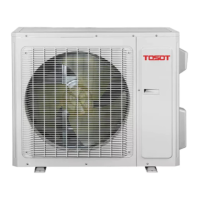


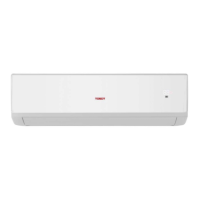

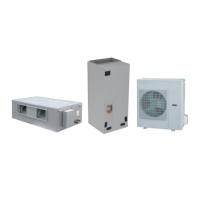
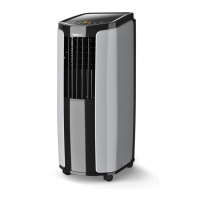
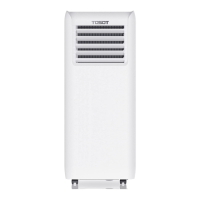
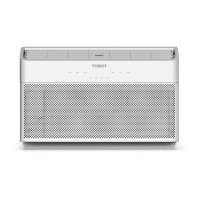
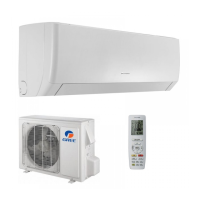

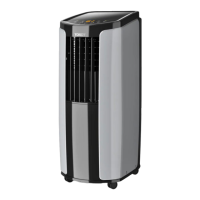
